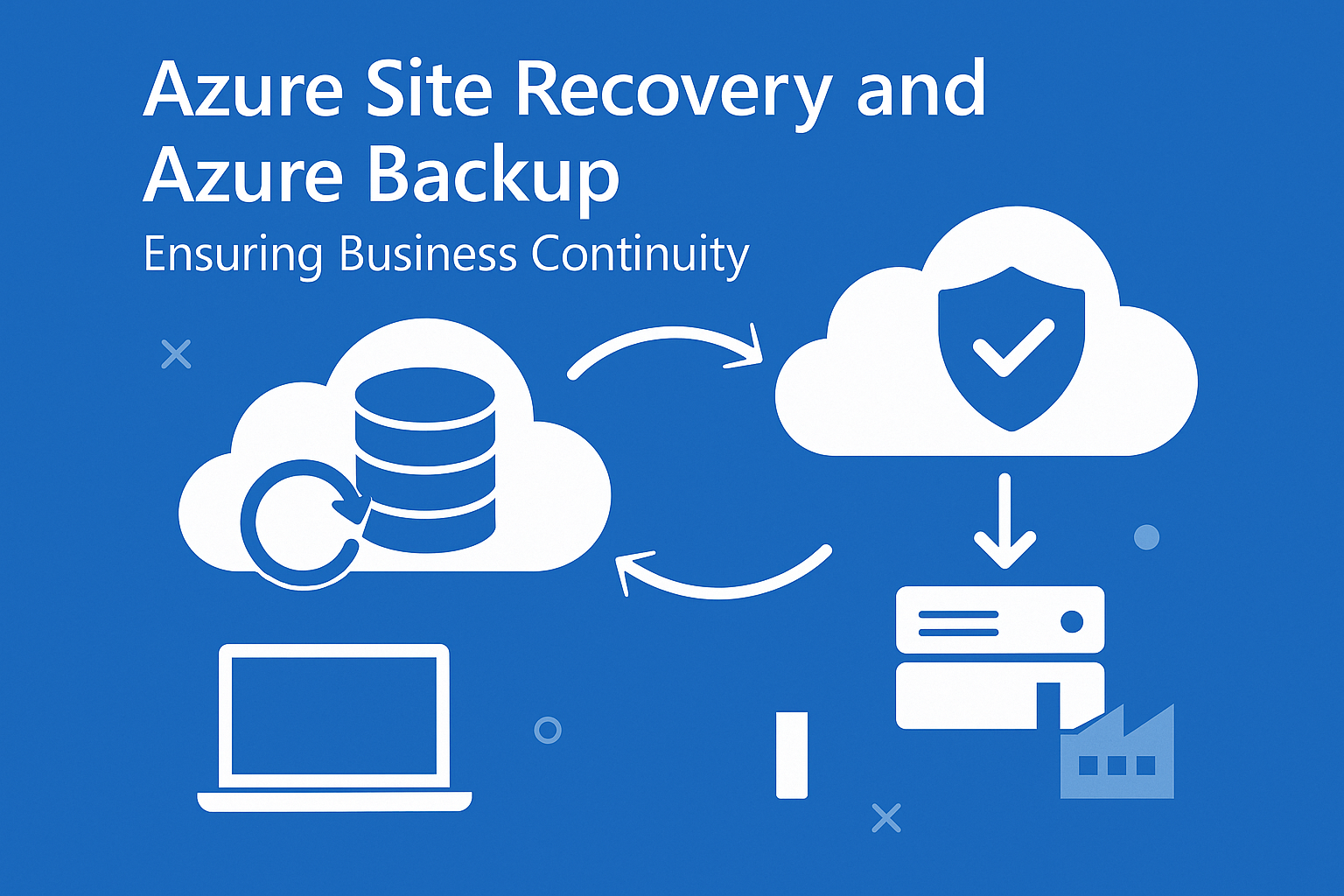
In today’s cloud-driven world, data protection and business continuity are not just nice-to-haves — they’re mission-critical. Microsoft Azure offers two key services for ensuring resilience: Azure Site Recovery (ASR) and Azure Backup. Although they both help safeguard your data and workloads, they serve distinct purposes and are often used together for a robust disaster recovery strategy.
What is Azure Site Recovery (ASR)?
Azure Site Recovery is a disaster recovery-as-a-service (DRaaS) that helps ensure business continuity by keeping your apps and workloads running during outages. It replicates workloads running on physical machines, VMs, or Azure VMs to a secondary location (either on-premises or in Azure). When a disruption occurs, you can fail over to the secondary location and continue working with minimal downtime.
Key features of ASR:
Continuous replication with minimal RPO (Recovery Point Objective)
Automated failover and failback
Application-consistent snapshots
Integration with Azure automation for customized recovery plans
What is Azure Backup?
Azure Backup is a scalable, secure, and cost-effective backup solution that protects your data in Azure and on-premises. It’s designed for long-term data retention and recovery, and it supports VMs, files, folders, SQL databases, SAP HANA, and more.
Key features of Azure Backup:
Agentless VM backups for Azure VMs
Long-term retention policies
Centralized monitoring and alerts
Encrypted and secure storage
Restore to the same or alternate location
When to Use ASR vs. Azure Backup
| Scenario | Use ASR | Use Azure Backup |
|---|---|---|
| Disaster recovery (DR) planning | ✅ | ❌ |
| Long-term data retention | ❌ | ✅ |
| Automated failover to Azure | ✅ | ❌ |
| Restore specific files or data | ❌ | ✅ |
| Replication of workloads in near real-time | ✅ | ❌ |
For comprehensive protection, use both together: ASR for disaster recovery, and Azure Backup for data retention and restore.
Short FAQs
1. Can I use Azure Backup and ASR at the same time?
Yes. They serve different purposes and complement each other. Use ASR for replication and failover, and Backup for recovery and long-term retention.
2. Does Azure Backup support on-premises servers?
Yes. Azure Backup supports Windows and Linux on-premises servers using the Microsoft Azure Recovery Services (MARS) agent or System Center DPM.
3. Is ASR suitable for compliance and DR testing?
Absolutely. ASR allows non-disruptive testing of your DR plans, ensuring compliance without impacting production.
4. What’s the pricing model for ASR and Backup?
Both are pay-as-you-go. ASR is priced based on protected instances, while Backup is based on storage consumed and number of backups.
How to Create and Manage Users on a Linux Server with SSH Key Authentication (F.A.Q)
Can I use different SSH keys for different users?
Yes. They serve different purposes and complement each other. Use ASR for replication and failover, and Backup for recovery and long-term retention.
Does Azure Backup support on-premises servers?
Yes. Azure Backup supports Windows and Linux on-premises servers using the Microsoft Azure Recovery Services (MARS) agent or System Center DPM.
Is ASR suitable for compliance and DR testing?
Absolutely. ASR allows non-disruptive testing of your DR plans, ensuring compliance without impacting production.
What’s the pricing model for ASR and Backup?
Both are pay-as-you-go. ASR is priced based on protected instances, while Backup is based on storage consumed and number of backups.



